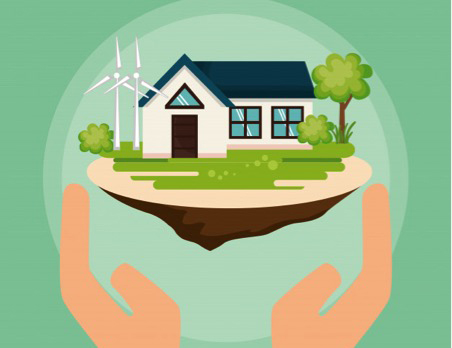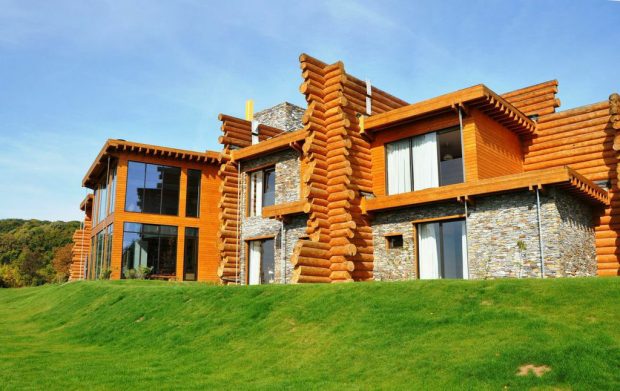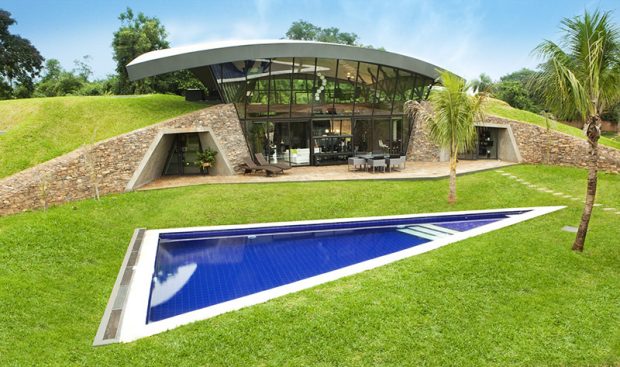Regardless of whether you opt for building your own home from the ground up or buying a pre-owned one, State Property Management LLC says there are plenty of things to consider to make sure you are making the right choice. From ensuring you can get a loan and manage the mortgage through finding the right space and neighbourhood for your family to thinking about the safety of the house and insurance, as a new owner of sustainable home, you will have a lot on your plate.
However, another very important aspect you cannot afford to neglect is the sustainability of your new home. In this day and age, there are so many benefits of having a truly green home and, therefore, that is something that you must think about before making a purchase or starting the building process. In order to help you out, we have made a checklist containing all the factors to keep in mind for your new home.

Think About the Location
Before any building can commence, you first need to make sure you have the right location for your home. If you are buying a pre-made or pre-owned house, carefully consider whether the position in relation to the sun is beneficial for you. Unfortunately, there is not much you can do here if you’re not willing to completely remodel it so it might be better to look for another property. On the other hand, if you will be purchasing a lot and building your home from scratch, you will have more options. You can choose the side that will get more natural light and where to plant trees that will give your home some shade as well as a wind barrier during the colder parts of the year. Furthermore, when picking the lot, you should look for a green development site such as former rail yards, parking lots, factories and shopping malls and avoid environmentally sensitive areas like wetland, farmland and habitats of endangered species.
Consider the Size
Then, you have to think about the size of the house you will be building or purchasing. You can decide to add countless green updates to your home but having a lot of square footage will always result in a bigger consumption of resources. This is why it is recommended to invest in a home of a smaller variety as it will require a lot less electricity, heating and air conditioning.
Research the Building Materials
Once you have found the right location and decided on the size of the house, you need to start doing some research into the materials you will be using during the construction process. Talk to your home builders to see which materials are best for the area you are living in and whether there are salvaged and recycled materials that you can use. Furthermore, look for low- and zero-VOC paints and sealants and other non-toxic materials. Concrete, bamboo and recycled steel are just some of the eco-friendly construction materials you can make the most of. In case you are buying a home, make sure you conduct an audit of the materials used and see whether they suit you.

Don’t Forget About Insulation
During the building process, there are other things to keep in mind as well, such as insulation. Making sure your home is properly insulated while still constructing it will help you save a lot of money and time in the future as you surely do not want to have to do it a couple of months after moving in. Having the house’s walls and roof insulated will prevent cool and warm air from leaking out of your home and having huge bills. When buying a property, it’s best to have the insulation checked before you sign a contract to prevent nasty surprises.
Pay Attention to Doors and Windows
In addition to making sure the walls and roof are properly insulated, you should also ensure no warm or cool air can leak through the doors and windows. These elements should have ENERGY STAR ratings and be chosen according to the climate you live in. For example, some excel at keeping the house warm while others are better at keeping the temperature lower. Moreover, you need to be able to shut them properly and seal all holes around them where the air could escape. Once again, if you don’t want to have to change the windows and doors as soon as you move into a newly-purchased home, you should properly inspect them beforehand.
Invest in Energy Efficiency
Proper insulation and doors and windows play a big part in saving energy but a lot more can be done by purchasing energy-efficient appliances. These should also be ENERGY STAR certified in order to boost the energy efficiency of your home. While these appliances might cost more upfront, they will certainly lower your bills and will have to be repaired less often. Therefore, refrigerators, stoves, dishwashers, washing machines and AC units should all be bought with this in mind. However, one thing you must remember is to have them regularly checked out to ensure they are working properly. Thankfully, finding a good washing machine or AC repair service is not difficult at all and will help you save a lot in the long run.
Work on Water Efficiency
Conserving energy is not the only thing you have to think about in a sustainable home – you also need to be aware of the amount of water you are using. For starters, you can invest in water-efficient fixtures in the kitchen and bathroom. This is easily done by installing low-flow faucets and showerheads, motion-activated faucets and low-flush toilets. Furthermore, you can also add a water-conserving irrigation system to your home as well as a rainwater collection and storage system.
Add Solar Panels
A sustainable home is also one that can exist separate from the electrical grid. While investing in solar panels looks like a huge expense, it is actually a great investment seeing as how it can really pay for itself in just a couple of years depending on its size. Adding solar panels means that you can produce your own energy and even earn money by selling electricity back to the power companies. What is more, you can also heat your water by using the sun.
Install a Cool Roof
The type of roof also plays a big role in how warm the house gets. Certain dark roofs easily absorb heat and make both attics and homes very warm, which leads to an increase in the use of air conditioners which, in return, can use a lot of electricity. This is why people often opt for light-coloured roofs and, as of lately, cool roofs. These cool roofs are made of asphalt and they reflect sun rays and thus keep the home cooler.
Plan out the Landscaping
Finally, you need to think about the landscaping around your home. While planting new trees will not provide you with instant rewards, in the future, you will have plenty of benefits of a nice deciduous tree. It will give you some shade in the summer so that you don’t have to spend a lot on cooling your home and they will let the sun in during winter so that it heats up easier. What is more, you should also pick plants that can don’t require a lot of water if you live in a drought-prone area.
This checklist contains everything you need to know when it comes to inspecting the sustainability of your new home. By making sure you are using recyclable materials, properly insulating your home and investing in the right appliances, your sustainable home will surely be very eco-friendly.
Read More:
Your basic guide to building an eco home
4 ways to make your kitchen more environmentally friendly
Sustainable renovation hacks for a more stylish and eco-friendly home
Importance of home valuation and methods to calculate home value


